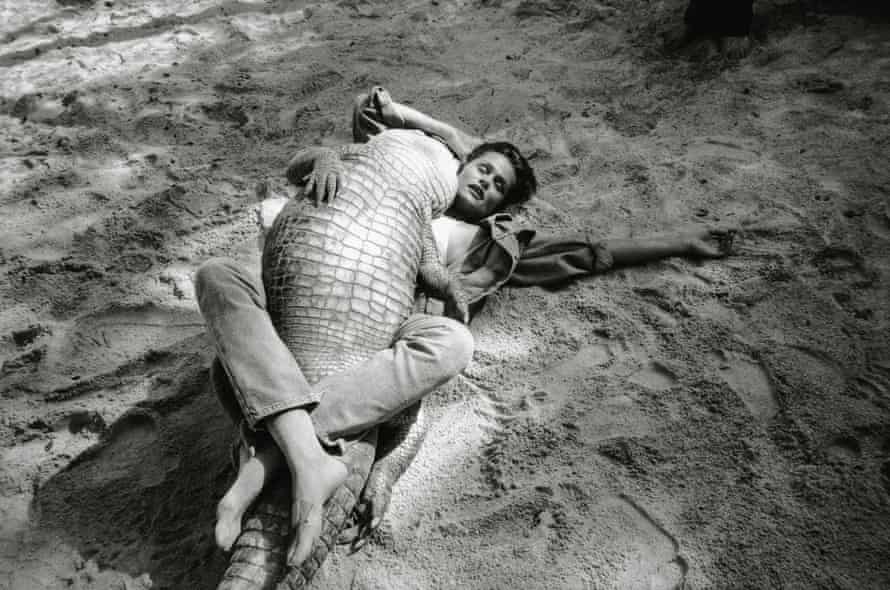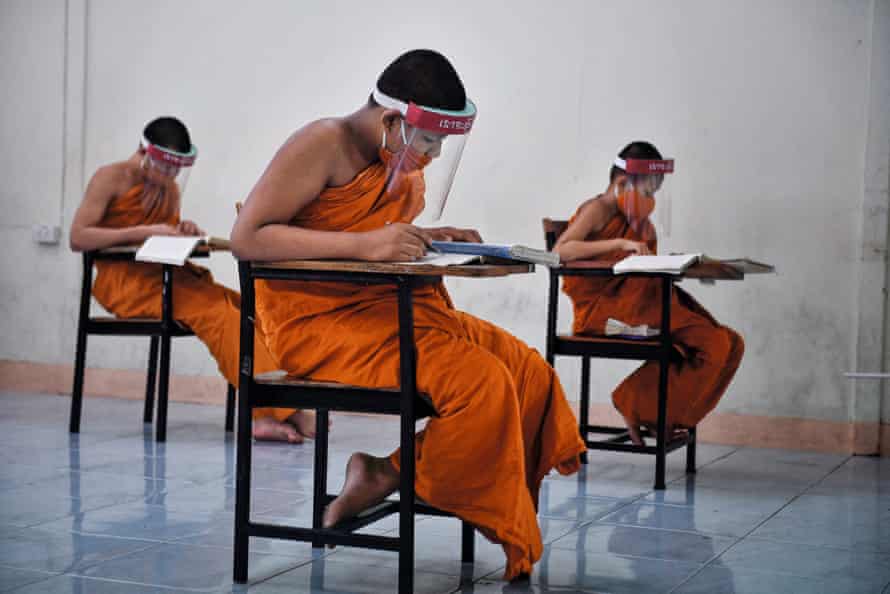 |
| The left bank of the Lower Rio Negro, near the Anavilhanas archipelago, from Sebastião Salgado’s ‘superb’ Amazônia. Photograph: Sebastião Salgado |
Spend six years in the Amazon with Sebastião Salgado, five decades with Helmut Newton, long months on the road in America, and a year in Covid world
Peter Conrad
Sunday 5 December 2021
In colonial times, Brazil’s European settlers referred to the malarial, snake-infested jungle of the Amazon as a “green hell”. Sebastião Salgado’s superb Amazônia (Taschen) sees it as a black and white heaven, or as a paradise in the process of being lost – not closed to unworthy human beings but whittled away by farmers and churned up by mining. Salgado mythologises the landscapes he photographs, and his documentation of six years in the Amazon looks like a reprise of the first week in Genesis. As drenching rainstorms retreat from the steaming, apparently molten earth, dry land solidifies; tribal people clamber out of the river and begin to increase and multiply; the creator’s covenant with his biodiverse creation is renewed by a rainbow that arches over the mountains.

Salgado depicts the indigenous Amazonians as noble savages, innocent but startlingly elegant with their feathered headdresses and patterned face paint. Ejected from Eden, their latter-day descendants perform eroticised war dances in Helmut Newton’s Legacy (Taschen). Newton, who enjoyed reducing his sophisticated female subjects to a primitive state, saw clothes as fetish wear that revealed the body rather than covering it. Models were stripped nude after the catwalk parade ended, then ordered to reassume their strutting poses: is their bare skin also a disguise? Jerry Hall squeezes a slab of bleeding beef against her face, and another model shows off the Bvlgari jewels on her wrists and fingers while chopping up an uncooked chicken. In Newton’s perverse tableaux, beauty is an act of violence, an armed assault on nature.
Matt Black’s American Geography: A Reckoning With a Dream (Thames & Hudson) is a tragic atlas, documenting long months on the road in impoverished tracts of the country. The palette is stark, inky black and icy white, with flights of baleful Hitchcockian birds blotting out a washed-out or ashen sky. If the sun shines, it glints from junked liquor bottles, and the music that accompanies Black’s halting progress is made by the squeaking of plastic seats in a Greyhound bus. When western horizons open up, the space looks desolate, not grandly primordial like Salgado’s Amazon. Yet the photographs confer a stoical dignity on these exiles from America’s glossy promise, and notes from Black’s journals reveal how compassionately he listened to their jaunty tales of woe.

The Year That Changed Our World (Thames & Hudson) chronicles the pandemic in bright, sometimes lacerating colour. It begins by exposing something no one wants to see, as a passing cyclist in Wuhan pointedly ignores a corpse slumped in the street. Surreal oddities soon beguile the eye. An Indian policeman wears a blow-up of the spiky red coronavirus as a helmet; in Virginia, shop window dummies in evening dress occupy alternate tables in a fancy restaurant to enforce social distancing. Near the end, the nave of Salisbury Cathedral becomes a vaccination clinic, while in the Barcelona opera house a string quartet serenades an audience of 2,000 potted plants. Both spectacles are post-apocalyptic but somehow reassuring: religious faith gives way to medical science, and greenery reinherits the abused Earth.


No comments:
Post a Comment